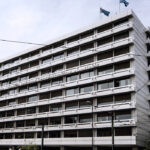On April 22, 1500, the Portuguese seafarer Pedro It reached the northeast coast of South America, making a journey that was to leave an indelible imprint on world history. The discovery of Brazilianas it was established by European historiography, it was not only a new geographical revelation, but also the beginning of a long colonial periodfull of contradictions, conflicts and radical changes to the populations and territories of this area.
Campral, head of a fleet of thirteen ships and about 1,200 men, had sailed from Lisbon On March 9, 1500, in order to repeat the route of Vasco da Gama to India, looking for new commercial opportunities for the Portuguese crown. The journey followed the widespread course provided by the then naval practice: they were headed southwest, off the Atlantic, to exploit the favorable winds of the area. It remains the subject of scientific debate if the change of course to the west was the result of weather conditions or deliberate choice. There is evidence that Portugal already suspected the existence of land in the west of the Atlanticwithin its own sphere of influence, as defined by the Tordezi Treaty in 1494.
The name “Brazil” was dominated by Pau-Brasil red wood, one of the first exportable products to draw Portuguese interest.
April 22 saw for the first time the South America coastline – A picture that impressed them with its lush vegetation and its wooded areas. Cabral himself recorded his experience carefully, while Fleet Secretary Pero Vaz de Kainia sent a letter to King Emmanuel I of Portugal, describing in detail the New Earth and its people. Initially, the area was considered an island and was named “Ilha de Vera Cruz”. Shortly afterwards, the name was amended to ‘Terra de Santa Cruz’ while The name “Brazil” was permanently dominated by PAU-BRASIL Red Woodone of the first exportable products to draw Portuguese interest.
Contact with natives has been decisive from the beginning. Portuguese describe the inhabitants as naked, friendly, full of curiosity – Probably members of the Topi, a race that lived along the coast. Gift exchanges are recorded, rituals, as well as the first universal operation in New Epirus by priest Frey Enrique de Kivra on Easter Sunday. This religious ceremony, in addition to being symbolic, sealed Portugal’s intention to claim spiritual – cultural power on the new earth.
Within a few years, new exploration and recording missions began to be organized.
Campral remained in the area for about ten days. He set up a rough camp, repaired ships and recording the natural characteristics of the place. On May 2, he left behind a small men’s force and continued his journey to India. His mission, however, had already paved the way for Portugal’s systematic presence in New World. Within a few years, they began to be organized New exploration and recording missionsand from 1530 onwards the colonial administration began officially.
Brazil’s discovery by Campral was a station that combined naval boldness with geopolitical calculations and economic aspirations. It was the first step of a process that was not limited to the exchange of knowledge or products, but triggered deep rearrangements in the population, social structure and natural environment of a huge continent. And even though the discovery itself was made by the Portuguese side with a sense of triumphant, it was nothing less than the beginning of a new historical reality for millions of people who have been able to see their world radically changing.
Column: Myrto Katsigera, Vassilis Minakakis, Antigoni-Despina Poumenidou, Athanasios Syroplakis








